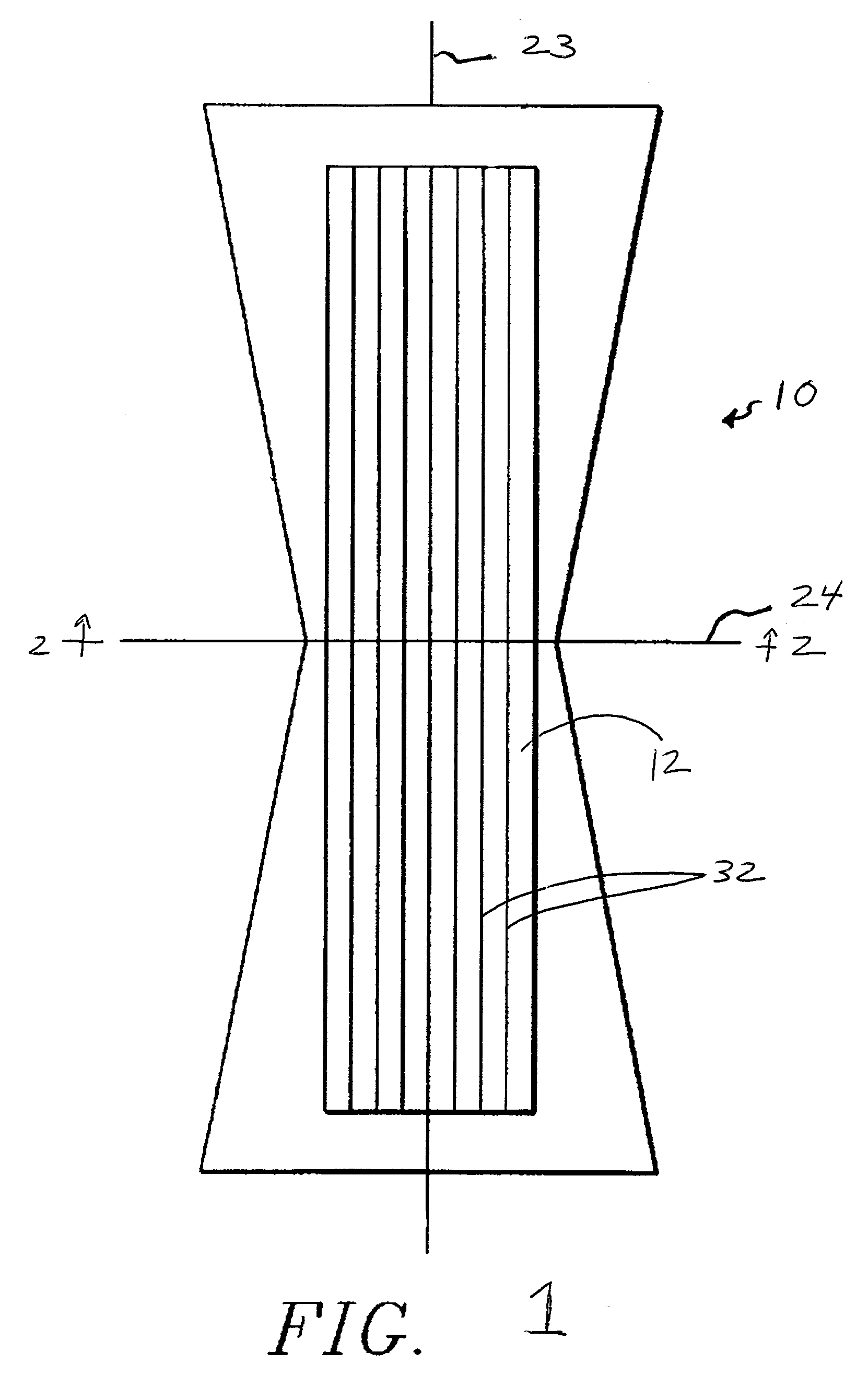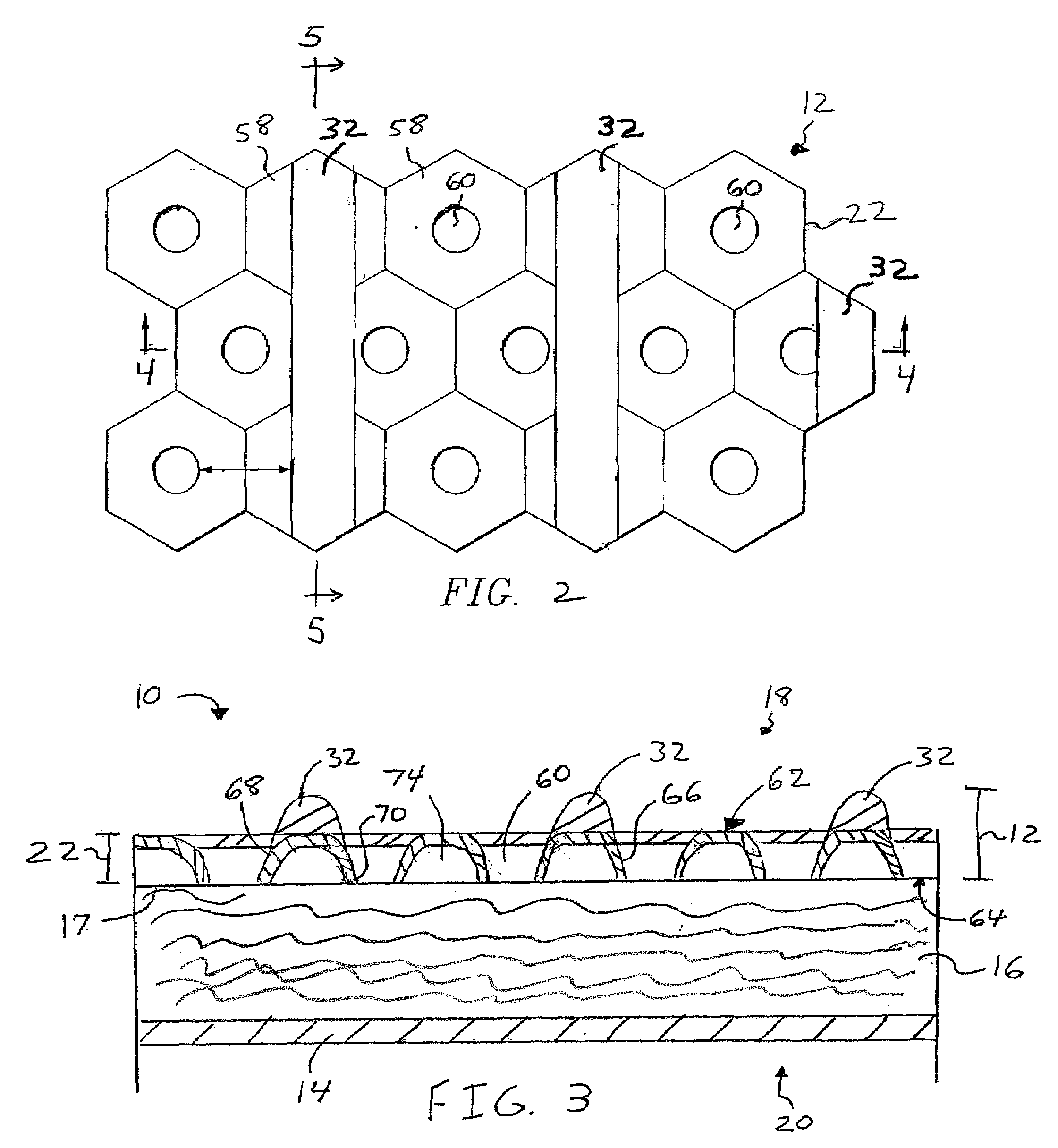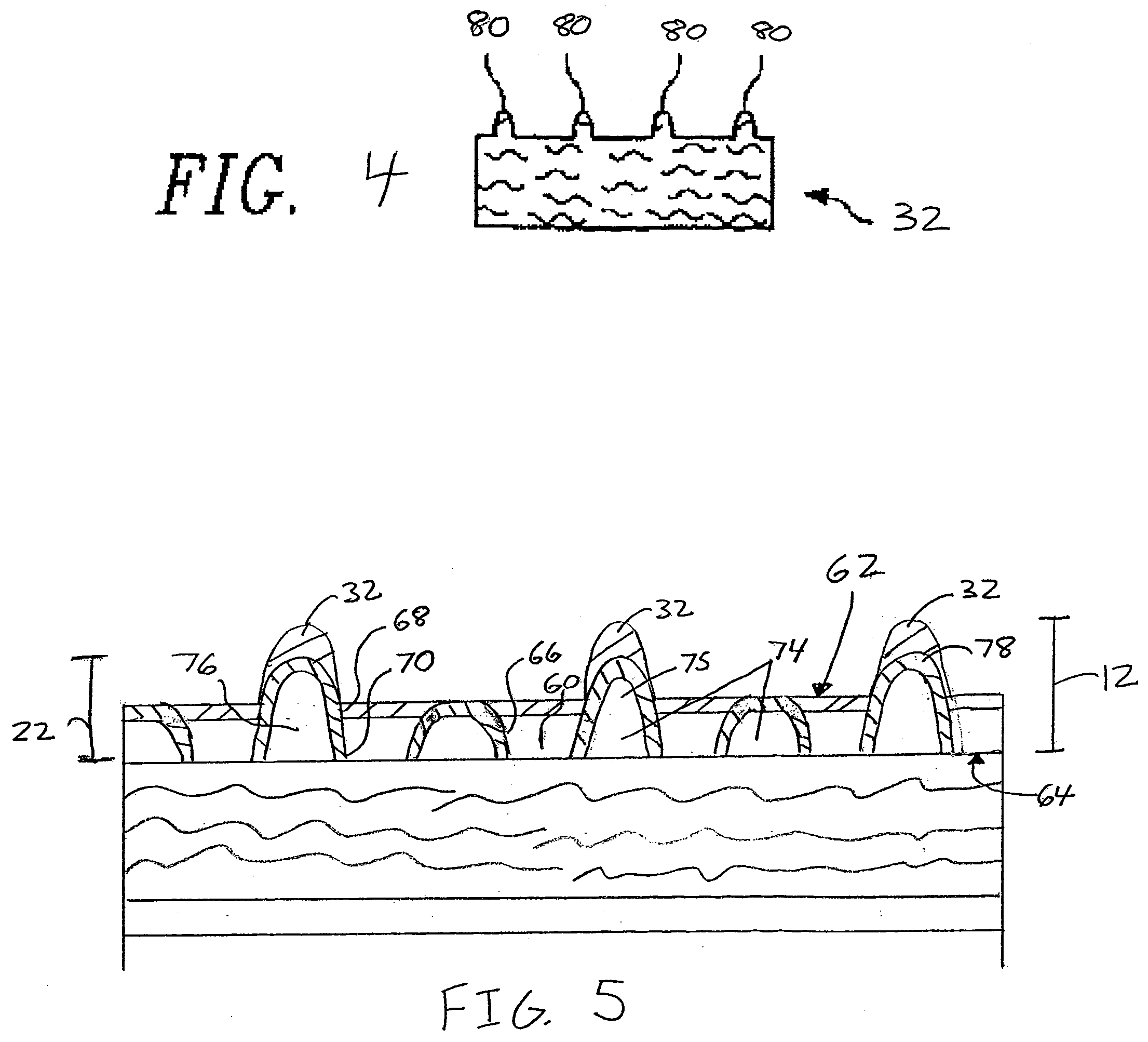Dry top formed film
a top-forming film and dry technology, applied in the field of apertured film, can solve the problems of maintaining the dryness of the skin-contacting surface of the article, the method is faced with a number of drawbacks, and the topsheet does not provide sufficient air space between the topsheet, so as to achieve good fluid acquisition, improve the feel, and improve the effect of fluid acquisition
- Summary
- Abstract
- Description
- Claims
- Application Information
AI Technical Summary
Benefits of technology
Problems solved by technology
Method used
Image
Examples
first embodiment
[0044]The thermoplastic materials for use in forming the apertured continuous layer 22 and raised lanes 32 for this embodiment are the same as discussed above. As in the first embodiment, if a hydrophobic thermoplastic material such as a polyolefin resin is used to form the apertured continuous layer 22, then the film must be treated so that at least the female side 62 is hydrophilic. The same methods, as discussed above, may be employed.
[0045]Another aspect of the present invention relates to a method for making an apertured film for use as a topsheet for an absorbent article. Accordingly, an embodiment of the invention is a method for making an apertured film for use as a topsheet for an absorbent article, comprising (a) extruding a flat continuous layer of a polymer melt having an upper and lower surface onto a screen assembly; (b) coextruding lanes of a hydrophobic polymer melt having a top surface onto the upper surface of the continuous layer; (c) applying a pressure different...
second embodiment
[0049]In a preferred embodiment, the screen assembly is able to form the raised ridges 78 (FIG. 5) of the These raised ridges may be formed by, for example, affixing wire-like members to a film contacting surface of an external member, a forming screen, or other film contacting surface. The wire-like members may be round, square, rectangular, elliptical or a polygonal shape. The wire-like members are ideally spaced so that one to five of the underlying openings or cells of the base screen are left unobstructed between adjacent wire-like members. Spacing of the wire-like members should be set to optimize aesthetic, tactile, fluid flow, fluid overflow channeling, and void volume space for fluid distribution and anti-rewet properties of the resulting film products as various applications will dictate. In a preferred embodiment, the number and diameter of the wire-like members correspond to the number and thickness of the raised lanes 32 as discussed above.
[0050]The wire-like members m...
PUM
| Property | Measurement | Unit |
|---|---|---|
| Fraction | aaaaa | aaaaa |
| Fraction | aaaaa | aaaaa |
| Length | aaaaa | aaaaa |
Abstract
Description
Claims
Application Information
 Login to View More
Login to View More - R&D
- Intellectual Property
- Life Sciences
- Materials
- Tech Scout
- Unparalleled Data Quality
- Higher Quality Content
- 60% Fewer Hallucinations
Browse by: Latest US Patents, China's latest patents, Technical Efficacy Thesaurus, Application Domain, Technology Topic, Popular Technical Reports.
© 2025 PatSnap. All rights reserved.Legal|Privacy policy|Modern Slavery Act Transparency Statement|Sitemap|About US| Contact US: help@patsnap.com



